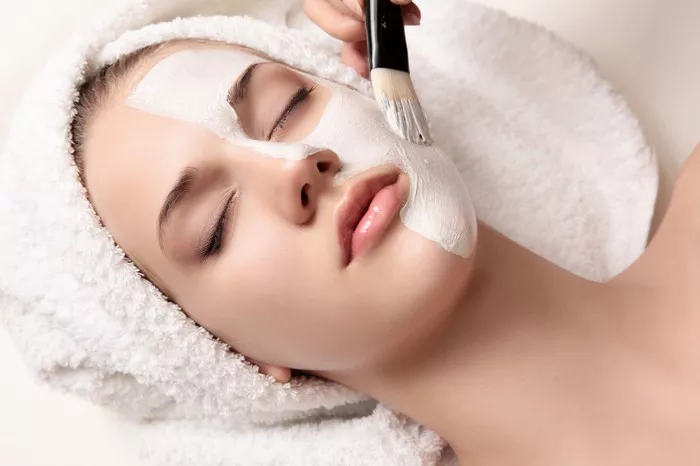Burns are one of the most common types of skin injuries, and they can result in scars that may linger long after the skin has healed. Whether you’ve experienced a burn from a hot object, fire, chemicals, or the sun, the resulting scar can be unsightly and emotionally distressing. Treating old burn scars effectively requires understanding the types of burn scars, how they form, and the treatment options available. In this article, we will explore the causes of burn scars, the healing process, and the most effective treatments for reducing their appearance and promoting smoother skin.
Understanding Burn Scars
Before we dive into treatments, it’s essential to understand what burn scars are and why they form. A burn scar is a result of the skin’s natural healing process after a burn injury. When the skin is damaged, the body produces collagen to heal the wound. This collagen forms scar tissue, which may not look the same as the surrounding skin.
Types of Burn Scars
Burns are categorized into three levels based on their severity, and each type of burn results in different kinds of scars:
First-Degree Burns: These are the mildest burns and affect only the outer layer of the skin (epidermis). First-degree burns usually result in redness and mild pain but do not typically leave scars after healing. If scars do form, they are usually mild and fade over time.
Second-Degree Burns: These burns penetrate deeper into the skin, affecting both the epidermis and the dermis (the layer beneath the epidermis). They can cause blistering, swelling, and significant pain. Scarring from second-degree burns can range from mild to moderate, depending on the depth of the burn.
Third-Degree Burns: These are the most severe type of burn, affecting all layers of the skin and sometimes even the underlying tissues, muscles, and bones. Third-degree burns often result in significant scarring, and the healing process can take a long time. These scars can be very deep, discolored, and may require surgical intervention.
The severity of the burn and the depth of the damage play a critical role in the type and appearance of the scar that forms.
The Healing Process and Scar Formation
The healing process after a burn injury involves several stages:
Inflammatory Phase: Immediately after the burn, the body’s immune system responds by reducing inflammation and preventing infection. In this stage, the wound may appear red and swollen.
Proliferative Phase: During this stage, the body starts producing new tissue to replace the damaged skin. Collagen production increases, which leads to the formation of scar tissue.
Maturation Phase: This phase can last months or even years after the injury, during which the scar tissue matures and remodels. Over time, the scar may flatten and become less noticeable, but in some cases, it may remain thick, raised, or discolored.
The appearance of burn scars can vary based on several factors, including the severity of the burn, the individual’s skin type, and how well the wound was cared for during the healing process.
Factors That Affect Burn Scar Healing
Several factors can impact the healing of burn scars:
Burn Severity: The deeper the burn, the more likely it is to result in a noticeable scar.
Age: Younger skin tends to heal faster and with fewer scars than older skin.
Skin Type: People with darker skin tones may be more prone to developing hypertrophic or keloid scars, while lighter skin may be more prone to sunken, atrophic scars.
Location of the Burn: Burns in areas of high tension (such as the face or joints) may cause more prominent scars due to the stretching of the skin.
Wound Care: Proper care of the burn wound during the healing process can reduce the severity of scarring. This includes keeping the wound clean, avoiding infection, and moisturizing the skin.
Genetics: Some individuals are genetically predisposed to developing more severe scars, including keloids or hypertrophic scars.
Treatment Options for Old Burn Scars
While it may not be possible to completely eliminate burn scars, various treatments can significantly improve their appearance and help the skin heal more effectively. The treatment options vary depending on the type and severity of the scar, as well as the individual’s skin type. Below are some of the most effective methods for treating old burn scars.
1. Topical Treatments for Burn Scars
Topical treatments are one of the most common and accessible ways to reduce the appearance of burn scars. They typically involve applying creams, gels, or oils to the scar tissue, helping to hydrate, soothe, and regenerate the skin.
Silicone Gel Sheets and Silicone Creams
Silicone is one of the most widely recommended ingredients for treating scars. Silicone gel sheets or silicone-based creams can help flatten and smooth raised scars, especially hypertrophic or keloid scars, by providing a protective barrier over the scar and keeping the area hydrated.
How It Works:
Silicone helps to reduce collagen production, preventing the scar from becoming raised or thick.
It also retains moisture, promoting a healthier healing process.
Effectiveness:
Studies have shown that silicone gel sheets and creams are effective in reducing the size, redness, and texture of burn scars, particularly hypertrophic scars.
How to Use:
Apply a thin layer of silicone gel to the scar and allow it to dry.
Silicone sheets should be worn over the scar for several hours a day, preferably overnight.
Corticosteroid Creams
Corticosteroid creams are anti-inflammatory and can be used to treat raised burn scars. They help reduce swelling, redness, and irritation, which can lead to the scar becoming flatter and less visible over time.
How It Works:
Corticosteroids reduce inflammation and collagen production, helping to soften and flatten raised scars.
Effectiveness:
Corticosteroid treatments can be particularly effective for hypertrophic and keloid scars, though they may take weeks or months to show results.
How to Use:
Apply a small amount of corticosteroid cream directly to the scar and massage it in. Use as directed by your healthcare provider.
Vitamin E
Vitamin E is a popular home remedy for treating scars due to its antioxidant and skin-healing properties. It is believed to help regenerate skin cells and reduce scarring.
How It Works:
Vitamin E helps to hydrate and promote the healing of damaged skin, increasing collagen production.
Effectiveness:
While some people experience positive results using vitamin E for burn scars, the evidence on its effectiveness is mixed. It may work better for mild scars than for deep or raised ones.
How to Use:
Apply pure vitamin E oil directly to the scar once or twice a day.
Honey
Honey has natural healing properties and can help moisturize and soothe scar tissue. It is a gentle and natural option for treating burn scars.
How It Works:
Honey helps to retain moisture in the skin and promotes tissue regeneration.
Effectiveness:
Honey can be effective for mild burn scars, especially when used consistently over time.
How to Use:
Apply raw honey to the scar and leave it on for 20-30 minutes before rinsing it off with warm water. Repeat this process 2-3 times a day.
2. Chemical Peels
Chemical peels are a type of exfoliating treatment that can help remove dead skin cells and promote the growth of new, healthier skin. This can improve the appearance of old burn scars, especially for superficial ones.
How It Works:
Chemical peels use acids like glycolic acid or salicylic acid to exfoliate the skin, removing the outer layer and stimulating new skin growth.
Effectiveness:
Chemical peels can improve the texture and appearance of burn scars, especially those that are shallow or not deeply embedded.
How to Use:
Chemical peels should be performed by a dermatologist or licensed professional, as improper application can lead to further skin damage.
3. Microneedling
Microneedling involves using tiny needles to create micro-injuries in the skin. This process stimulates the skin’s natural healing response and promotes the production of collagen and elastin, which can help reduce the appearance of burn scars.
How It Works:
The microneedling process encourages the skin to regenerate by stimulating the deeper layers, resulting in smoother and more even skin.
Effectiveness:
Microneedling can be highly effective for atrophic (sunken) burn scars, but it may take multiple sessions for optimal results.
How to Use:
Microneedling should be performed by a licensed professional to avoid complications. At-home devices are available, but they are less effective and may cause skin irritation.
4. Laser Treatments
Laser treatments are one of the most advanced and effective ways to treat burn scars, especially for deep scars. There are various types of lasers, including fractional CO2 lasers, that can target the deeper layers of skin and promote collagen production, improving the appearance of scars.
Fractional CO2 Laser
How It Works:
Fractional CO2 lasers create tiny columns of heat in the skin, stimulating collagen production and encouraging skin regeneration. This process can help smooth out deep scars and improve skin texture.
Effectiveness:
Fractional CO2 lasers are highly effective for treating deep burn scars and can significantly reduce their size and visibility.
How to Use:
Laser treatments should only be performed by a qualified dermatologist or licensed professional.
Non-Ablative Lasers
How It Works:
Non-ablative lasers target the deeper layers of the skin without removing the outer layer, promoting collagen production and improving the appearance of scars.
Effectiveness:
Non-ablative lasers are effective for treating mild to moderate burn scars and require less downtime compared to ablative lasers.
How to Use:
Multiple sessions may be required for optimal results.
5. Surgical Scar Revision
In cases where burn scars are deep, large, or highly visible, surgical scar revision may be necessary. This involves removing the scar tissue and re-stitching the wound in a way that minimizes the appearance of the scar.
How It Works:
A skilled surgeon removes the old scar tissue and re-closes the wound in a more aesthetically pleasing way.
Effectiveness:
Surgical revision can significantly improve the appearance of large, noticeable burn scars, but there is always a risk of developing new scars.
How to Use:
This procedure should only be performed by a qualified plastic surgeon or dermatologic surgeon.
Conclusion
Treating old burn scars takes time, patience, and the right approach. Whether you choose topical treatments, chemical peels, microneedling, laser therapies, or surgical revision, there are many options available to help improve the appearance of burn scars. The most suitable treatment will depend on the severity of the scar, the type of burn, and the individual’s skin type.
Always consult a healthcare professional or dermatologist before beginning any scar treatment regimen. With the right care and consistent treatment, you can significantly reduce the appearance of burn scars and achieve smoother, healthier skin.
Related Topics



































